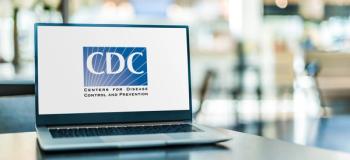
Bar-code shortcuts lead to gaps in patient safety
When three night-shift nurses at a large metropolitan medical center in the Northeast recently called in sick, the skeleton crew on a busy medical/surgical unit ignored the usual protocol involved in the bedside bar-coding of medications. Instead of scanning each patient's wristband and then the bar code on the medication package while at the patient's bedside, the nurses created surrogate patient bar codes and scanned all of them prior to going into patient rooms as a way to save time.
When three night-shift nurses at a large metropolitan medical center in the Northeast recently called in sick, the skeleton crew on a busy medical/surgical unit ignored the usual protocol involved in the bedside bar-coding of medications. Instead of scanning each patient's wristband and then the bar code on the medication package while at the patient's bedside, the nurses created surrogate patient bar codes and scanned all of them prior to going into patient rooms as a way to save time.
While that practice clearly defeats the purpose of using bar-code scanning technology as a way to reduce medication errors, it's no secret that in many hospitals nurses are taking shortcuts known as workarounds. The occurrence of workarounds seems to be on the rise, and that has some patient safety experts reeling. "This practice is full of error potential," said Michael Cohen, president, Institute for Safe Medication Practices.
The very concept of verifying at the bedside that the right patient is receiving the right drug in the right dose at the right time via the right route of administration-the "five rights"-is the reason bar-code scanning has become so popular. Workarounds could result in the wrong patient bar code being scanned, and when nurses perform charting functions subsequently, they would not have a true representation of the time the patient actually received the medication.
While Suess acknowledged that the issue of workarounds is a problem in many hospitals, she said there are things that could be done to reduce the practice. Ongoing monitoring of the bar-code process is one remedy. "If you put a bar-coding system into place, you need to have a way to watch it," she said. Other solutions can include enhancements to the system itself.
At Lancaster General if a nurse does not bar-code scan the patient's wristband, the software system requires that the patient's account number be typed in twice. "We are currently able to monitor the nurses' compliance to scanning the meds but are not able to monitor [via a report] compliance to scanning the patients' wristbands," said Suess. But that problem will be addressed in the spring when Bridge Medical, Lancaster General's bar-code software vendor, expects to introduce a report enhancement feature to its system.
Suess pointed out that while working around protocol could be potentially dangerous, there are situations that occur in which the nurse needs to be allowed to type in the account number. An example is when an acutely ill patient is involved and the bar code on his wristband does not scan. In such a situation, she said, a nurse would not want to jeopardize patient care while waiting 15 minutes for a new wristband to be delivered.
In addition, for new admissions who arrive in a very unstable condition, nurses don't have to wait around for the wristband to provide care. In that case, a nurse is able to identify the patient by typing in the account number and other identifier checks such as name and birth date until the wristband arrives.
Newsletter
Pharmacy practice is always changing. Stay ahead of the curve with the Drug Topics newsletter and get the latest drug information, industry trends, and patient care tips.













































































































































